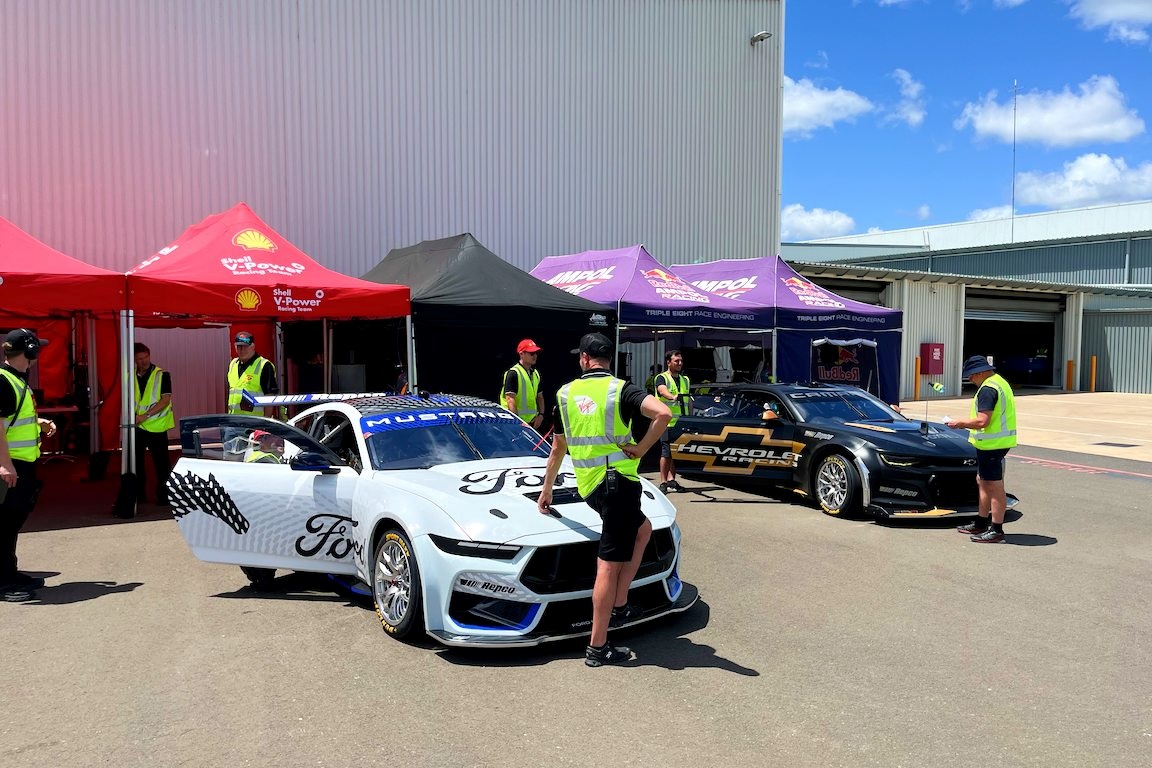

Supercars is likely to conduct further aerodynamic testing on its Gen3 cars before the season starts, Speedcafe.com has learnt.
The championship sent its prototype Ford Mustang and Chevrolet Camaro to Queensland Raceway for exercises including VCAT validation in mid- to late-January, but aerodynamic parity remains a point of conjecture.
It is thought that, this time around, the work would take place on an airstrip, as is protocol for VCAT, which was conducted over five days at Toowoomba’s Wellcamp Airport last November.
Whether or not the upcoming activity would be a full VCAT is not known although that seems unlikely, considering the 2023 season kicks off on March 10-12 at the Thrifty Newcastle 500.
Speedcafe.com understands that the aerodynamic work would take place between the category-organised all-in test day at Sydney Motorsport Park on Wednesday, February 22 and the first event of the season in the New South Wales Hunter Valley region in March.
One of Supercars’ key goals with Gen3 was to slash downforce in a bid to enhance racing by making following, and thus passing, less difficult.
That much is said to have been achieved, with category Head of Motorsport Adrian Burgess claiming a reduction in the region of 63 to 64 percent relative to the Gen2 cars.
Furthermore, there is not thought to be any concern about the total downforce figures for the Mustang compared to the Camaro.
What is an issue, however, is the balance of front and rear downforce.
According to figures from both sides of the brand divide, the Mustang either has or is claimed to have more front downforce and less at the rear than the Camaro.
That would make the Ford a better qualifying car, at least at most tracks which the Repco Supercars Championship visits, but give the Chevrolet the upper hand over a race distance.
One prominent paddock figure told Speedcafe.com recently, “Right now, they reckon that the Fords will be faster over a lap but the Chevy’s going to win all the races.
They added, “The way the aero balance has worked out, [the Mustang has] got too much front and not enough rear, and the Chevy’s the opposite.
“Obviously, over a distance, you always want rear downforce for tyre life, especially when you’ve got less aero – the tyre’s going to chew out more, especially at the rear.”
It is believed that VSDs, defined in the Supercars Operations Manual as “vehicle specification document containing the relevant requirements which are specific for a particular make and model of Car”, have not been finalised despite an Operations Manual now being issued for the 2023 season.
The revelations come less than a fortnight after Ford Performance Motorsports’ Global Director, Mark Rushbrook, told Australian media that “we are not satisfied that parity has been reached either for engine or aero” in the Gen3 Supercars project.
Shakedowns and testing continue today at Winton, with more running slated for tomorrow at the regional Victorian circuit and also at Queensland Raceway.





















Discussion about this post